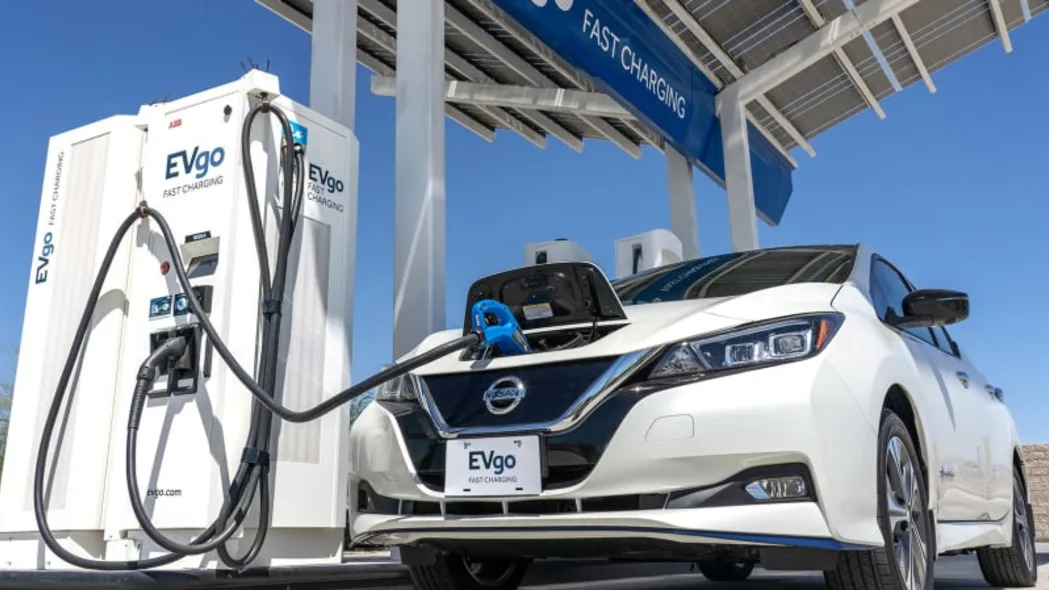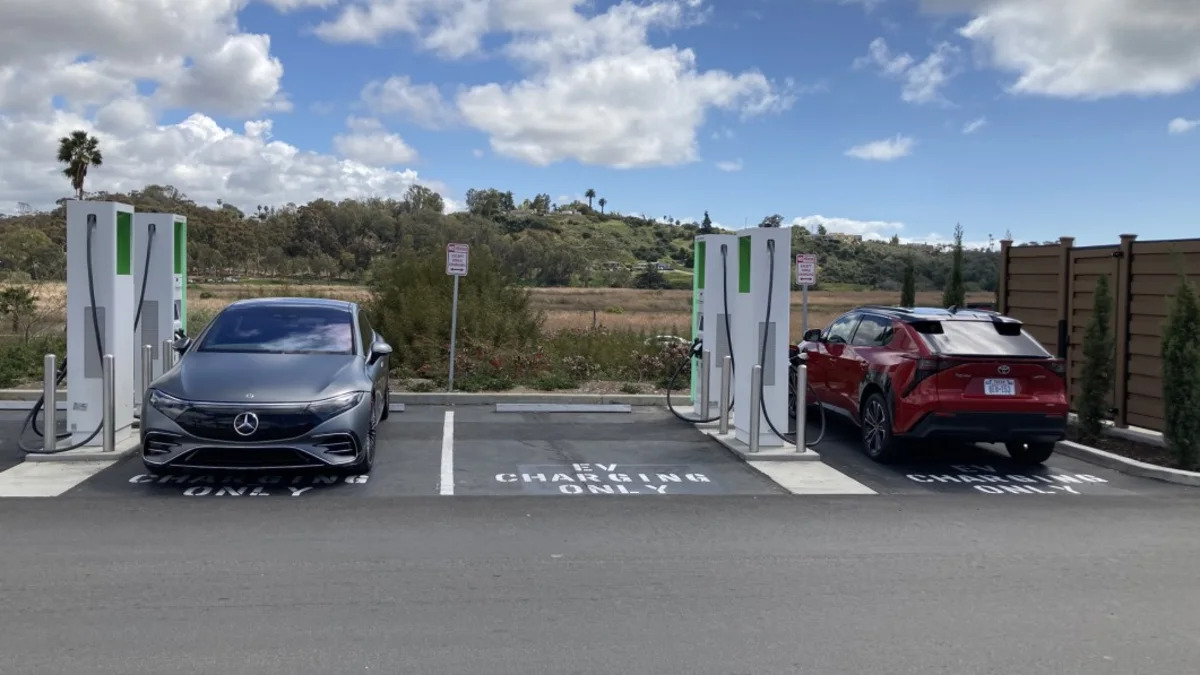New electric vehicles are being consistently introduced these days and, in our experience, most are absolutely worth the hype. If you're wondering which to buy, here's our list of best electric cars and SUVs. However, as good as making the switch to an EV sounds for environmental, economic or general automotive reasons, there's an elephant in the room: charging. There are a lot of specs and measurements that are bound to be foreign and a bit mind-numbing to those used to simply filling up every so often at a Shell or Chevron. Finding the right charger is definitely more complicated than just choosing between 87, 89 and 91 octane.
While it's easier than ever to use your smartphone’s mapping apps to find a nearby electric vehicle charging station, the hard part is knowing: Will that station work with your EV? Is it fast enough to charge your car in a reasonable time? What about Tesla, which always does things its own way?
As the world slowly shifts away from gas pumps and towards recharging cables, everyday EV drivers need to figure out the details of charging stations, things like kilowatt (kW) ratings and connector types. Welcome to the answer station.

Levels 1 and 2 vs. DC fast charging
Starting at the highest level, there are three main types of EV charging stations. Level 1, Level 2 and DC Fast Charge, sometimes incorrectly called Level 3. Speaking of incorrect word usage, EV drivers sometimes refer to charging stations as “chargers,” even though the actual charger is a device that’s onboard the car itself and converts the AC power from the grid to DC power that the battery can use. Technically, the devices installed near parking spots are called Electric Vehicle Service Equipment (EVSE), but we understand that "chargers" just has a nice, logical ring to it.
In any case, the slowest charging rate is called Level 1, using a standard 120-volt outlet (the same one you’d plug a toaster or vacuum cleaner into). Level 2 chargers, common for home and destination charging, use 240-volt outlets like those used in your house by a clothes dryer. While DC fast chargers require their own high-voltage cables. Level 1 charging mostly occurs in private residences or businesses, so anything you see on a digital map is likely to be Level 2 (on some maps I’ve seen, like the built-in navigation in the Polestar 2, Level 2 stations are called “slow”) or a DC fast charger (often labeled “fast”).
kW
There is another unit that determines how fast your EV will charge once you plug it in. The kilowatt rating of a station — almost always written as kW — basically describes how fast a charging station can put electrons from the grid into your car. The higher the number, the faster it is. Extension cord-style Level 1 EV charging cables that plug into standard household outlets in the U.S. can handle up to 1.9 kW (although most operate at 1.4 kW). Level 2 can reach 19.2 kW, while the newest DC fast chargers are in another realm altogether with 150-kW and 350-kW ratings.
While the exact amount of energy that can be put into an EV’s battery is based on more than a charging station’s kW rating, a good rule of thumb is that Level 1 allows for roughly five miles of range being added in one hour of charging, while Level 2 is around 25 miles per hour of charging. For DC fast charging, the numbers can range from 100 to over 200 miles added per hour.
As mentioned, charging speed is defined not only by a charging station itself. The 2022 Nissan Leaf, for example, can be ordered with two fast charging speeds. The lower trims have a 50-kW limit, while the upper trims can accept up to 100 kW. Maximum charging speed is therefore a spec you should research and take into consideration when comparing multiple EV models.

Connector type (look for J1772)
The kW ratings mentioned above come from definitions set by SAE International (formerly known as the Society of Automotive Engineers), which is responsible for numerous standards in the auto industry. SAE also sets an important standard called J1772, which was created so that EVs would all be able to connect to the same plug. Today, every new EV sold in the U.S. other than Tesla (see below) natively uses the J1772 connector for AC charging. But it’s a bit more confusing when it comes to DC fast charging.
That’s because DC fast charging a non-Tesla EV requires a connector that adds something to the standard piece of plastic that sits on the business end of the J1772 connector. The good news is that most automakers have agreed on the Combined Charging System (CCS) standard for DC fast charging, and every new non-Tesla EV sold in the U.S. can use this to fast-charge.
Until recently, some EVs sold in the U.S. used the CHAdeMO fast charging standard. The most popular of these was the Nissan Leaf, so if you’re shopping for a used Leaf, you’ll have to double-check that any fast charger you find in your map can plug into your EV. Now, though, Nissan has moved away from CHAdeMO in the U.S., so if you don’t have an old Leaf, adjust your search settings to filter out CHAdeMO stations and you should be good.

Tesla
With a decade of selling higher-end EVs under its belt, Tesla has learned a thing or two about providing drivers with the charge they need to move around. Around the time of the launch of the Model S 10 years ago, Tesla introduced its Supercharger network, which is a series of DC fast chargers that only Tesla drivers can use (for now, anyway; there are signs in Europe that at least some of these stations are opening up to other EVs). While the first Superstations were rated at 90 kW, new and upgraded stations range from 150 kW to 300 kW (with 350 kW on the horizon). Tesla has started selling a CCS adapter for its Supercharger stations in some markets, but if you own a non-Tesla EV, you should not expect to be able to use a Supercharger. By contrast, you can buy adapters for a Tesla to plug into non-Tesla chargers.
Paying for charging: paid vs. free, easy vs. not-as-easy
How you pay for your public charges depends on the EV and charging station you’re using. Some stations require you to sign up for an account on their network before paying, while others just take credit cards like a gas station. Even better, some cars and charging networks let you simply plug in — the car and station talk to each other, exchange your credit card info, and away it goes. Nice and simple.
However, there's a decent chance you'll get some amount of charging for free. For example, buyers of the Chevrolet Bolt EV and Bolt EUV get a $500 credit for charging on the EVgo network, while anyone who buys a new Hyundai Ioniq 5 gets two free years of unlimited 30-minute fast charging sessions at Electrify America stations. You can see more details here in our specific guide to free EV charging broken down by car brand.
Tesla famously offered early Model S buyers free, lifetime charging at its Supercharger network, but that ended in early 2017. Tesla drivers now handle paying for their time at a Supercharger through a credit card tied to their Tesla account, which the car communicates to the charging station upon plugging in.


Sign in to post
Please sign in to leave a comment.
Continue